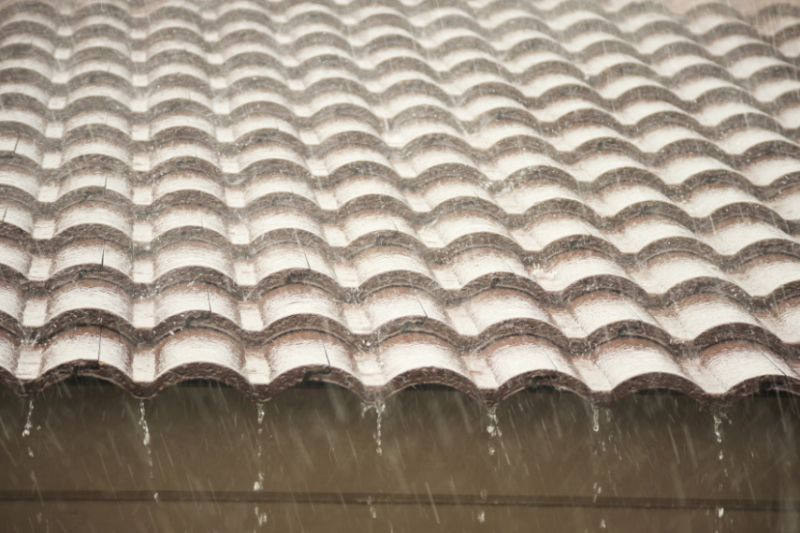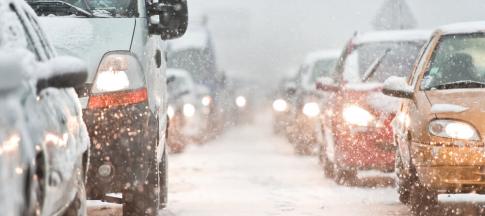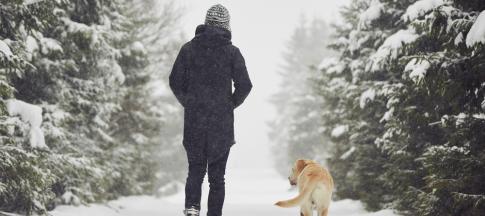
The weather in Britain can be unpredictable and we often see extremes of cold and hot weather. But how can this weather potentially affect your home?
We’ve taken a look at the effects of extreme weather conditions, so you can be prepared.
Subsidence
Subsidence can be an issue after long periods of very hot, dry weather, particularly in areas with clay soil.
This is because the ground expands with moisture and then contracts when it dries out, meaning that buildings can start to move.
If you notice cracks appearing in the walls, this could be a sign of subsidence.
Check out our guide on subsidence for more information.
Snow
A significant amount of snowfall can actually be surprisingly heavy.
If it builds up on the roof of your house or in the gutters, it could crack the guttering pipes or come up under the roof.
This isn’t too much of a problem while it’s still frozen, but it’s a good idea to clear it if it’s safe and you can.
As soon as the snow and ice start to melt, the water can leak through weak spots in slates, tiles and roof lining, into your ceilings and even walls.
If it’s not a lot of water, you may not notice it at first, but it can lead to other problems like damp patches and mould which are much harder to get rid of.
Damp
As Brits we’re used to a lot of rain, but spells of cold and wet weather can leave our homes prone to problems with damp.
There are three kinds of damp that might affect your home and cause major problems.
Rising damp
Ground water coming up through a wall or floor causes rising damp.
A damp-proof course or damp-proof membrane will usually stop it from causing damage, but if your house is older and doesn’t have one of these in place, you might notice:
- peeling wallpaper or paint
- damage to the plaster or skirting boards
- odd wet patches on the walls
Penetrating damp
Penetrating damp is caused when water leaks through the exterior walls and then spreads inside and across interior walls.
The usual cause of this is structural issues, like:
- broken guttering or roofing
- cracks in rendering or brickwork
- leaky pipes
Condensation
This is the most common of the three and generally happens in winter.
Things like showering or drying clothes indoors create a lot of steam and this condenses on walls, windows and other surfaces, particularly when they’re cold.
Make sure windows are opened regularly to ventilate the house and use extractor fans in the kitchen and bathroom to help reduce condensation.
Flooding
Flooding is more likely to be an issue during a milder, wet winter rather than a cold and snowy one.
Bad storms, prolonged periods of heavy rain and sudden cloudbursts all bring a risk of flooding.
If you live in a flood-prone area, there are some things you can do to protect your home from flood damage.
And regardless of where you live, it’s a good idea to make sure your guttering and drains are clear and not blocked by fallen leaves or other debris.
Check out our guide on what to do if your house floods and information about the government scheme, Flood Re.
Flooding and asbestos
Storms and flooding can also damage old asbestos cement products such as rainwater gutters, down-pipes, soffits, wall panels and roofs, which can cause them to either crack or break.
If you find broken pieces of asbestos cement products on the ground because of this, don’t let anyone go near them, including pets.
Don't pick them up or put them in the domestic waste bin. You'll need to get further advice from an environmental health officer at your local authority or council who’ll be able to recommend asbestos specialists to get rid of it safely.
Frozen pipes
When temperatures drop, the more exposed pipes in your home and garden are at risk of freezing.
If you have an outdoor tap, you might have already thought to make sure it's properly insulated, but you also need to think about pipes in your attic or garage.
If the water freezes in any of the pipes in your home, it can cause the pipe to burst. You might not be aware that this has happened until temperatures start to rise and the ice in the pipe then melts.
Our step-by-step guide will help you to prepare your home for winter so you don’t end up with frozen pipes.


